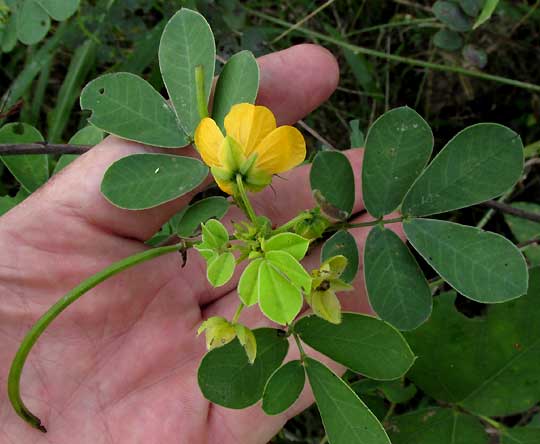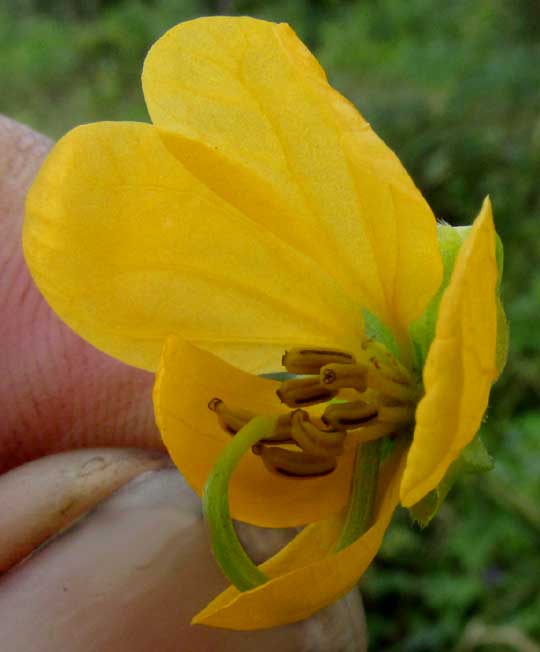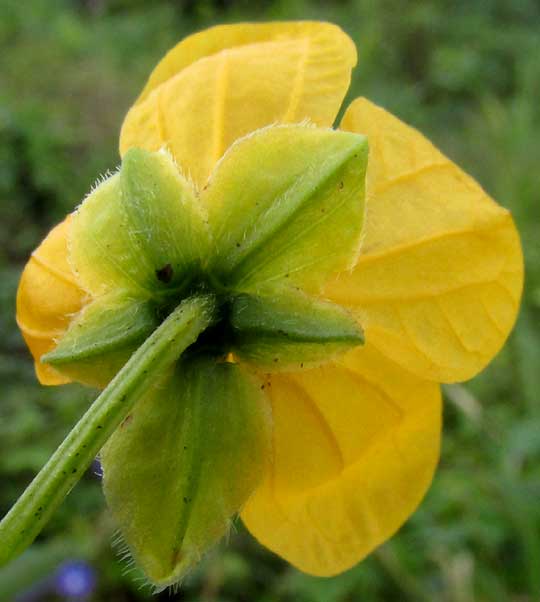Excerpts from Jim Conrad's
Naturalist Newsletter
from the December 20, 2015 Newsletter issued from Hacienda Chichen Resort beside Chichén Itzá Ruins, central Yucatán, MÉXICO
COBÁN SENNA
Twenty-two species of the Bean Family genus Senna are listed for the Yucatan Peninsula, and I keep finding ones new for me, and I do enjoy these "variations on the Senna theme." The newest addition to our personal list is one I'm calling the Cobán Senna, SENNA COBANENSIS, presumably named after the city of Cobán in central Guatemala. Previous sennas we've profiled were distinctly woody shrubs or small trees, but this new one is an herb with only slightly woody tendencies, and as a roadside weed grew only about knee high. Below, you can see its pinnately compound leaves, yellow flowers -- unusually few per cluster -- and long, slender, strongly curved, immature legume:

Below, a close-up of a flower cluster next to my finger shows the flowers small size as well as the fact that it's slightly asymmetrical:

In that picture, not only are the top petals larger than the lower but also the right and left sides are not quite mirror images of one another. Senna flowers are normally asymmetrical, but usually one side of the flower mirrors the other, so this seems to be an oddity of this species. Below, a look at the flower's backside shows that the green calyx also is asymmetrical, the sepals varying greatly in size:

A curious feature of this species is that although it habituates disturbed forests, roadsides and grassy areas, which are abundant habitats, and it occurs from Mexico to Panama with another population in the Andes of Peru and Bolivia, it's seldom collected or photographed, and not much is known about it.
In fact, CICY, the Yucatan Center for Scientific Investigation, which hosts the online Flora of Yucatan that is of such great help to me, had no pictures of it, and has asked to have mine, which of course they can. It's always fun to document such relatively unknown species.